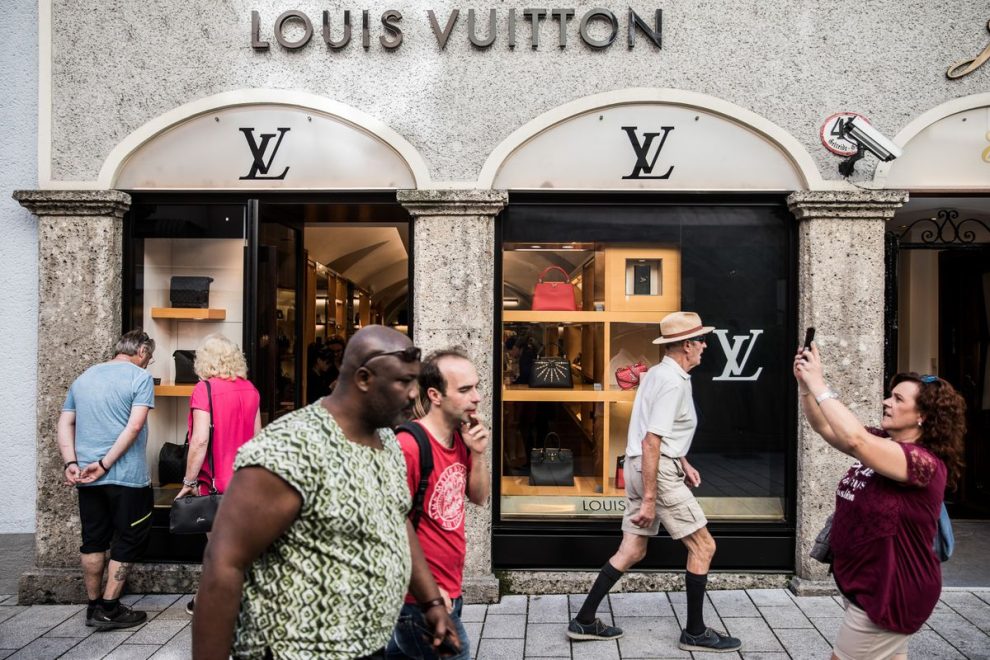Forever locked in competition over food, art, culture, literature, it was time Paris trumped the London stock market with its fashion brands.
Fashion doesn’t go out of fashion. The London Stock Exchange (LSE) learnt it the hard way. For the first time, last week, LSE lost out to Paris as Europe’s largest stock exchange. According to Bloomberg, French stocks with a combined market capitalisation of $2.823 trillion overtook that of London which was $2.821 trillion. This small edge was made possible due to one of the world’s biggest fashion labels LVMH Moët Hennessy Louis Vuitton, which is just over £300 billion on the Paris bourse. It takes the two biggest listed companies on LSE, Shell and AstraZeneca, to come together to surpass LVMH.
Although LVMH is a behemoth which leaves far behind the other companies, several of the other top stocks (by market capitalisation) in Paris are also fashion labels. L’Oreal, Hermes, Dior, Kering are the other very well-known brands that figure in the top 10 list thus reinforcing Paris’s image as the fashion capital of the world. Strong dollar, lifting of COVID-19 restrictions, improved sentiments among American and Chinese shoppers who drive the global demand for luxury goods have pushed the demand for these popular brands.
In contrast, the top stocks at LSE hail from banking, finance, pharmaceuticals, metals and energy sectors all of which are struggling given the record-high inflation, soaring energy costs and unprecedented rise in mortgage rates. Retail heavyweights like Ocado, Marks & Spencer, JD Sports have seen an average drop of 40 per cent in their stock prices. Burberry, a major luxury brand at LSE, has witnessed a rally, but is nowhere close in value to luxury top-performers in Paris.
Over the last few years Paris has been inching towards dislodging the London stock market. In 2014, UK stocks were valued $2 trillion more than those in Paris. By 2016, the difference came down to $1.4 trillion. Brexit and the current economic downturn are being blamed for London’s latest capitulation to Paris. However, votaries of Brexit cite the extraordinary dominance of LVMH as the primary reason for this misleading triumph. While LVMH is a huge factor, it is difficult to deny that there is a historicity to the flowering of luxury brands on Paris’s streets and stock exchange.
In the late 18th century it was quite common to come across writings and art that contrasted English masculinity with French effeminacy. London was seen as a city of commerce; Thames much busier than Seine, which was graceful but was seen to be existing only as an adornment. Scholar Michele Cohen in her book Fashioning Masculinity: National Identity and Language in the Eighteenth Century (1996) talks about the English anxiety on how French practices of sociability could blur the line between “manly politeness and luxurious effeminacy”. “English vulnerability to the seductiveness of things French could sap the very moral fibre of the nation at its core, its masculinity.”
As Cohen persuasively argues, the English elites bracketed the womenfolk with the French of both the sexes in the larger project of forging their masculine identity. Such discomfort with France and French because they are feminine sat well on their heavy shoulders to civilise the various nations of the British Empire. But then, unlike France, there was no revolution in England that overthrew the monarchy and clothes that had trappings of wealth and extravagance.
Pleasure and fashion became synonymous with treason and death. Thousands of political opponents and aristocrats were executed and many more were thrown into prison. Street names, calendars, chess pieces were renamed, and recalibrated to effect widespread cultural changes. It didn’t last long.
A sub-culture of extravagance took centre stage with the diminishing allurement of frugality in the last few years marking the end of the 18th century. This was the antidote to the revolution which was bolstered by the surviving cream of the aristocracy mocking the earlier violence and killing by donning outlandish garments. Bordering on the vulgar and silliness, this reactionary movement was led by Les Incroyables (The Incredible Men) and Les Merveilleuses (The Incredible Women) who made it fashionable to be scandalous! All of that submerged with the rise of Napoleon Bonaparte and French nationalism.
In the later years of the 19th century, a variety of Parisian couturier houses came into existence from which emerged Guerlain (in 1828), Hermès (1837), Cartier (1847), Louis Vuitton (1854), Lanvin (1889), Chanel (1901), L’Oreal (1909), Christian Dior (1946) and many more. This marked the dawn of the modern day dominance of French luxury giants around the world.London and Paris are forever locked in competition over food, art, culture and literature, so it is apt for Paris to trump the London stock market by virtue of its fashion brands. They love to do it in style.
Source: Money Control






















